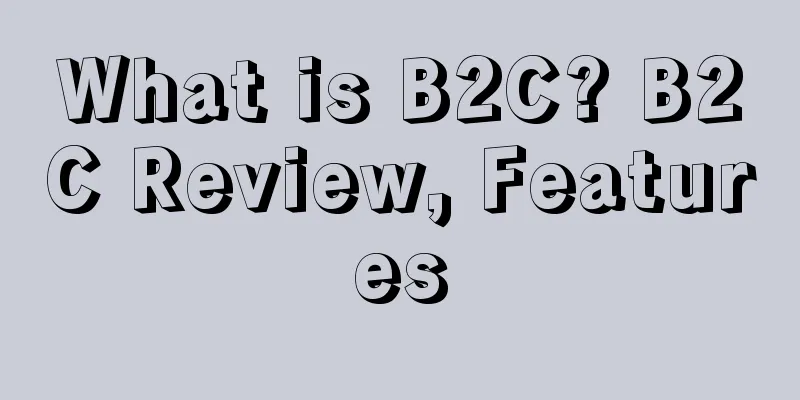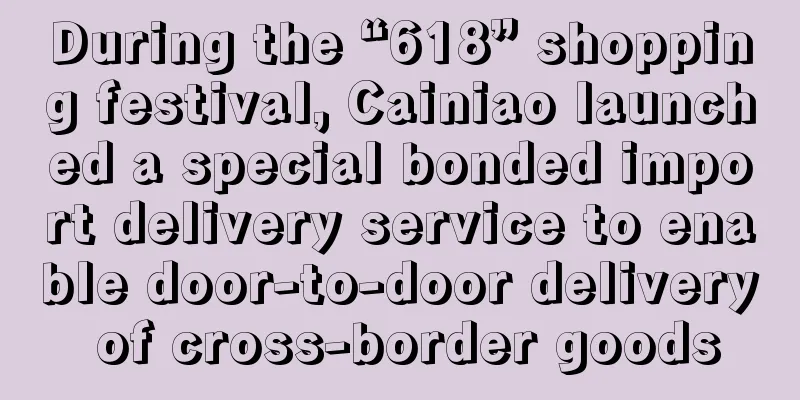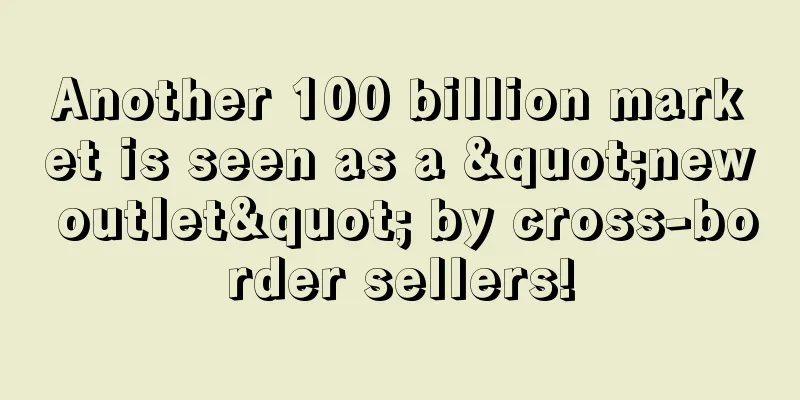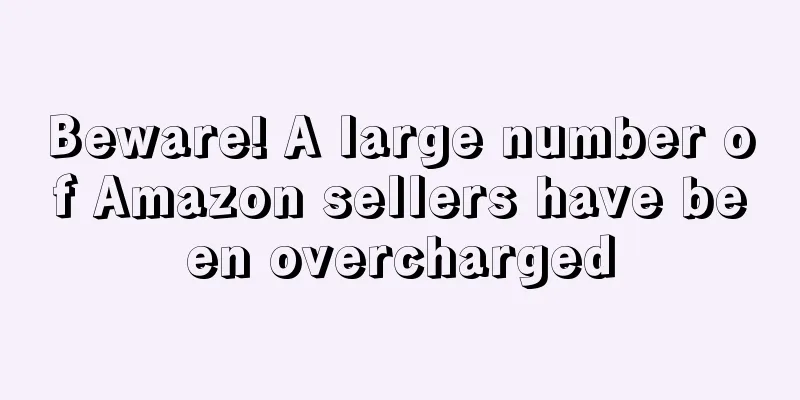What is B2C? B2C Review, Features

|
B2C (Business-to-Customer) is abbreviated as "商对客" in Chinese. It is a model of e-commerce, which is usually referred to as a commercial retail model that sells products and services directly to consumers. B2C is the main business model of Tmall and JD.com. About B2C · The B2C model is the earliest e-commerce model in my country, marked by the official operation of 8848 online mall. B2C means that enterprises provide consumers with a new shopping environment through the Internet - online stores. Consumers shop and pay online through the Internet. This model saves time and space for customers and enterprises, and greatly improves transaction efficiency. The payment method of B2C e-commerce is a combination of cash on delivery and online payment. Most companies choose to outsource logistics to save operating costs. Type classification 1. Platform-based shopping mall Features: wide range of industries; many similar competitors; mainly merchants; logistics are handled by merchants; payments are collected directly by merchants; merchants can directly bid for product rankings. Advantages: ready-made traffic; high platform visibility; wide selection of logistics channels. 2. Vertical independent platform Features: Independent website; focused on a certain vertical field; self-built logistics system. Advantages: It is conducive to forming one's own channel brand influence; it is not restricted by platform functions, and can independently develop new platform functions and have more professional competitiveness. 3. Comprehensive independent platform Features: covers a wide range of industries; mainly opened by retailers; open interfaces; logistics is handled by an independent platform; payments are collected by an independent platform. Advantages: large traffic volume; professional logistics team. 4. Group buying websites Features: low product price and short product sales cycle. Advantages: The sales quantity is huge at one time, and the limited-time ultra-low price is more attractive. Mainstream model 1. Third-party platforms (Tmall, JD.com, Paipai, Yihaodian, etc.) Advantages: large platform, many users, and brand guarantee. Disadvantages: expensive, highly dependent, many penalties, and high requirements. 2. Build your own independent online store Advantages: self-owned, independent domain name, not dependent on any platform, low cost. Disadvantages: Requires professional operation and promotion talents to manipulate traffic, conversion rate, etc. Features 1. Large user base. 2. The equipment used for shopping is simple. 3. The payment or transfer amount involved in the transaction is small. 4. Customers are relatively stable and there are no “one-time” customers. 5. Personal confidential information such as account number and operation amount. 6. It has the characteristics of a wide range of business entities, a large coverage area, and a relatively high degree of freedom, and has good development prospects. Disadvantages 1. The product catalog is huge, it is difficult to find product information, and it is quite inconvenient to complete the authentication and online payment procedures. In addition, most domestic payments are still made through postal remittances. 2. B2C e-commerce lacks the support of complete traditional backend services, such as logistics and distribution. The inability to deliver goods to consumers in a timely manner is often an important reason that hinders people from shopping online. 3. Difficulty in capital turnover. In order to meet the needs of consumers, B2C e-commerce companies need to spend a lot of money to replenish their supply. This is also the main reason why the entire e-commerce industry is struggling to operate. 4. Inaccurate positioning. Including inaccurate product positioning; inaccurate customer group positioning; high price positioning. 5. Incomplete online payment system. The prominent feature of online shopping is the use of credit cards to realize online payment. 5. The credit mechanism and e-commerce legislation are not sound. Some merchants publish false information, withhold payments, and leak user information in order to maximize profits. Some buyers cancel orders without reason after submitting them, and some sellers sell inferior products as good ones. These phenomena often occur, and these phenomena are the fundamental reasons why consumers have doubts about online shopping. B2C cross-border seller types 1. Large sellers on traditional online e-commerce platforms Such sellers can be divided into two categories based on their product selection strategies: · A large number of SKUs are distributed across a wide range of categories, with low average order value and small profits but quick turnover. · Limited product categories, strict selection model, building private brands, or involving big data product selection. 2. Regional B2C e-commerce platform covering all categories Most of these sellers are located in developing countries such as the Middle East, Southeast Asia, South Asia, and Africa, where traditional giants have little involvement. They exist in the form of apps, landing pages, etc. Most of them cover all categories and operate in a self-operated model or a platform-based seller store model. In the self-operated model, merchants will enter the platform as suppliers, and the platform will be responsible for customer service, logistics, and other services. 3. Single-category global platform/brand The main model of this type of sellers is to directly control the back-end supply chain, build a global brand for a specific category, and conduct cross-border sales through their own platforms and other channels at the same time. The main representative companies include SheIn for women's clothing, PatPat for mothers and babies, etc. |
<<: What is AEO certification? AEO certification Review, Features
>>: What is FBS(Fulfiled by Souq)? FBS(Fulfiled by Souq) Review, Features
Recommend
What is ZonPages
ZonPages provides sellers with various tools to p...
What is Esselunga OnLine? Esselunga OnLine Review, Features
Esselunga OnLine is an online shopping software u...
Net profit increased by 27466%, with profits exceeding 10 billion in half a year due to strong sales!
Affected by the epidemic, the sales of global epi...
What is Ying International Trade LLC? Ying International Trade LLC Review, Features
Ying International Trade LLC was established in 20...
What is ChannelEngine? ChannelEngine Review, Features
ChannelEngine is a platform that helps brands mana...
Prime Day may be scheduled for July, sellers are looking forward to it
So, when will Prime Day be held this year ? How s...
AliExpress invests heavily in apparel category, Cainiao's "cross-border apparel line" provides protection
On February 29, Cainiao announced the launch of t...
Chenghai sellers leverage Shopee to stimulate the growth potential of the 10 billion industry belt
With this tenacity, a group of the first generati...
A container ship caught fire! It was loaded with Chinese goods and had been docked in Shenzhen and other places...
Breaking news! A container ship full of Chinese g...
The maximum fine is 350,000 yuan! Amazon and the FTC are cracking down
Both Amazon and the Federal Trade Commission (FTC...
SHEIN's global influence continues to grow, becoming one of the most popular fashion brands in Germany and the United States
Recently, GlobalData released the latest "Ge...
Local sellers hit a record low, but Chinese sellers are still the "leader" of Amazon.com
As the most competitive "battlefield" f...
Amazon’s Labor Day promotion has begun, and the best-selling list is released!
The first Monday of September every year is Labor...
94% of UK online brands have lost EU customers
Brexit has had a severe impact on the UK e-commer...
What is Yunju ERP? Yunju ERP Review, Features
Yunju ERP management system is an online ERP syst...









